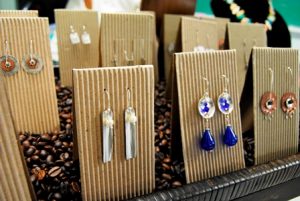
The path to a more sustainable fashion industry is forked; what the consumer can do in making more conscious purchasing decisions must converge with an industry that is determined to make these decisions easier and more readily available.
No matter what we’re told, by and large the fashion industry is not ahead of the curve when it comes to sustainability. The fashion industry is still the world’s second largest polluter – second only to the petroleum industry. Many of the big brands’ environmental policies can be criticised as being damage control more than anything else; great for PR but largely ineffective when it comes to solving the real problem at hand.
However smaller, independent designers, with sustainability at the core of their brand from day dot, are becoming more widely available. The idea of ‘shopping small’ has benefits beyond supporting small business, and often comes with positive environmental impact.
If only smaller brands had the marketing budgets of the giants. Many of these fashion forward eco warriors are largely unknown to the average consumer. Arguably, a smaller supply chain contributes to their ability to remain true to their sustainable business practises, eradicating the need for fast, mass production.
The ability to have a conversation with the manufacturer at the point of purchase about where products are sourced and how they’re made is a huge benefit of shopping small. Markets such as the famous Brick Lane and Spitalfields in London or Glebe and Rozelle in Sydney are filled with hand crafted, eco conscious wares, made and sold by artists who are available to give honest answers about their processes.


